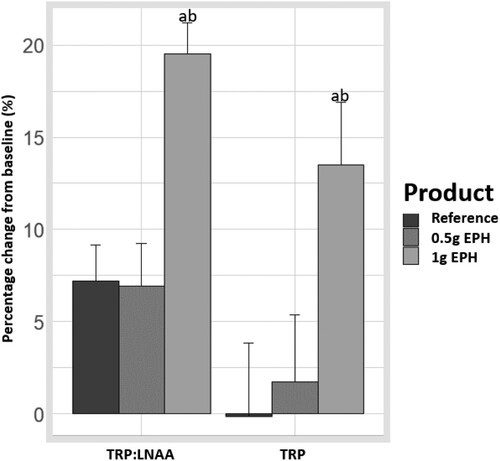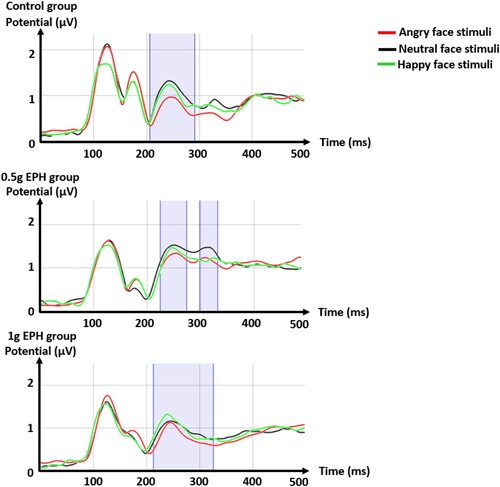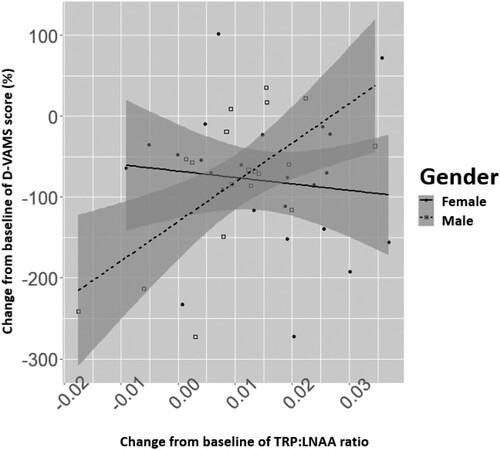Figures & data
Table 1. Subject and dataset completion.
Table 2. Experimental procedure.
Table 3. Participant demographics and baseline blood measures.
Figure 1. Effects of egg protein hydrolysate (EPH) dosing on serum levels of tryptophan (TRP, in μmol/L) and ratio of tryptophan to other large neutral amino acids (TRP:LNAA). The effect was calculated as a percentage change from baseline to 95 minutes post-product intervention. The letters ‘a’ and ‘b’ respectively represent the statistical differences between the 1 g EPH group and reference and, between the 1 g EPH and 0.5 g EPH groups (p < .05).

Table 4. Differences in blood biomarkers changes from baseline between groups.
Table 5. Differences in product liking and post-stressor mood states between groups.
Table 6. Post-stressor differences in attention performances between groups.
Figure 2. Effects of egg protein hydrolysate (EPH) dosing on low frequency peak (Hz), high frequency peak (Hz) and, the ratio of low frequency to high frequency peaks of the heart rate variability spectrum. The letters ‘a’ and ‘b’ respectively represent the statistical differences between the 1 g EPH group and reference and, between the 0.5 g EPH group and reference (p < .05).

Table 7. Overall differences in autonomic parameters between groups.
Figure 3. Microstate segmentations, calculated from global field powers (GFPs, in microvolt), of event-related potentials (ERPs) to angry, happy, and neutral face stimuli for the reference, 0.5 g EPH and 1 g EPH groups, using the algorithm for hierarchical clustering. Each color in the graph represents a stable microstate associated with a scalp topographic pattern and an ERP peak (P1, N170, P2 or LPP). Time is given relative to stimulus onset.

Figure 4. Global field powers (GFPs, in microvolt) of event-related potentials to angry, happy, and neutral face stimuli for the reference, 0.5 g EPH and 1 g EPH groups. Time is given relative to stimulus onset. Statistical differences between GFPs to angry and neutral face stimuli (p < .1) are highlighted in blue.


